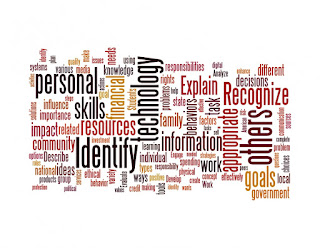Although this is a continuation
of my previous blog, I thought I would provide a little bit of information about
myself to ease my way back into it. I am currently a 4th year
student at Brock University, taking part in the Concurrent Education Child and
Youth Studies program with a kindergarten to grade six teachable area. After I
complete my degree in teaching, I would love to specialize in children with
learning disabilities. For now, I am just excited to learn about interesting
and innovative ways to teach children in the 21st century.
I had previously heard about 21st
century literacy, but was never sure of what it entailed. Thus far, I better
understand that literacy is not just reading and writing, it is so much more
than that. Literacy provides meaning into different contexts. To me, this
definition appears to be slightly vague. However, when I consider what literacy
means to me I realize that it most likely means something different to others.
Taking the perspective of a future educator, I believe that it is my
responsibility to teach my students by being conscious of the different
literacies that should be acquired in today’s society. I could incorporate this
into group work, classroom lessons or encouraging communication skills in a
stimulating environment.
I would love to see my classroom
being as interactive as possible, promoting group work and giving options for
the children to make their own assumptions and decisions based on critiquing
skills. It would be extremely important to provide opportunities for critical
analysis skills to be developed, by encouraging children to question, and
stimulate their own learning based on their interests. Although these
characteristics may have been encouraged when I was in elementary school, I do
not recall classrooms being so highly interactive and critical. I think that unfortunately
my educational experience may have suffered slightly because even now I
sometimes struggle with critical analysis.
What I find most interesting
about 21st century literacies are the links that can be drawn
between the many different forms of literacies. A single lesson can draw from
multiple literacies at once, creating an environment of critically engaged
students. For instance, I considered the example of a child bringing in food to
school that could be donated to families in need. In order to buy this food to
donate, they need financial skills, moral skills and perhaps global literacy.
Other forms of literacy could be incorporated into this example as well. Children
could learn for themselves the good that comes as a result of helping others.
I am excited to learn more about
21st century skills and more importantly how I can use these to my
advantage in the classroom. I hope to learn how to effectively adapt based on
the needs of my students and provide meaningful lessons and incorporate many of
the different types of literacy. The benefits are limitless in my opinion.
Children will be able to learn from each other, communicate effectively, and be
able to critically engage with the world in which they live in.
https://www.aea267.k12.ia.us/techintegration/iowa-core-21st-century-skills-technology-literacy/
Overall I recognize how vital it
is how be open to new ideas due to the fact that literacies are constantly
changing and expanding. As 21st century literacy skills become more
dynamic, I as an educator will need to constantly remind myself to reflect on
my own learning to provide direction for my students’ learning in the future. I
strive to assess my learning as I become more engaged in my teaching,
particularly in the 21st century literacy course I am currently
taking by connecting with past material and re-reading blogs as I complete the
course.
